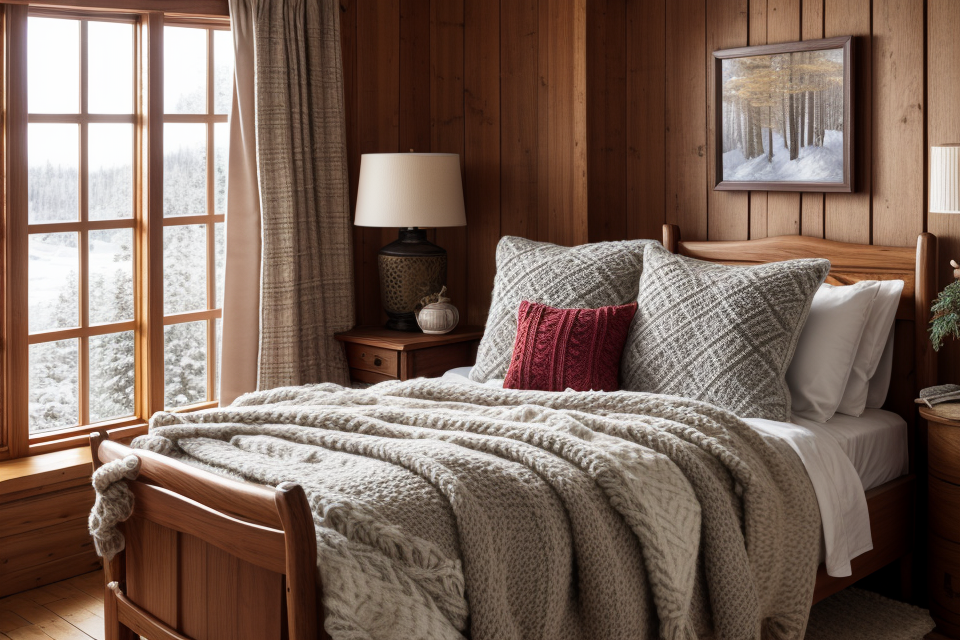Sweaters are a wardrobe staple that can last for years if taken care of properly. However, with so many options available in the market, it can be difficult to know which sweaters will stand the test of time. In this guide, we will explore the key factors to consider when buying sweaters that will last, so you can make smart purchases that will provide you with long-lasting wear. From choosing the right materials to paying attention to construction and fit, we’ll cover everything you need to know to maximize the lifespan of your sweaters. So, let’s dive in and learn how to make the most of your sweater investments!
Understanding the Factors that Affect Sweater Durability
The Importance of Material Quality
Natural vs Synthetic Materials
When it comes to sweater material, the choice between natural and synthetic materials is an important one. Natural materials such as wool, cotton, and cashmere are known for their warmth, breathability, and durability. Wool, in particular, is a popular choice for sweaters due to its ability to insulate and regulate body temperature. However, natural materials can be more expensive and may require special care, such as dry cleaning, to maintain their quality.
On the other hand, synthetic materials like polyester, acrylic, and nylon are often less expensive and easier to care for. They are also generally more resistant to shrinking, wrinkling, and stretching. However, some synthetic materials can be less breathable and may not provide the same level of warmth as natural materials.
Durability of Different Fabrics
Another factor to consider when choosing a sweater material is its durability. Some fabrics, such as cotton and polyester, are known for their strength and resistance to wear and tear. Wool, while generally considered a durable material, can be more prone to pilling and can lose its shape over time if not cared for properly. Cashmere, on the other hand, is known for its softness and comfort, but may not be as durable as other materials.
It’s important to consider how often you’ll be wearing your sweater and how much wear and tear it will likely undergo. If you’re looking for a sweater to wear on a daily basis or for a more active lifestyle, a material like polyester or cotton may be a better choice. If you’re looking for a more luxurious, yet still durable, option, consider cashmere or a blend of cashmere and another material.
Overall, the material quality of your sweater is a crucial factor in determining its lifespan. Consider the pros and cons of natural versus synthetic materials, as well as the durability of different fabrics, to make an informed decision when purchasing your next sweater.
Construction and Craftsmanship
Quality of Stitching
The quality of stitching refers to the way in which the sweater is sewn together. Poorly stitched sweaters are more likely to come apart at the seams or develop holes, which can significantly reduce their lifespan. Look for sweaters with stitching that is tight, even, and consistent throughout the garment. Additionally, consider the type of thread used, as higher-quality threads are more durable and less prone to fraying.
Reinforced Seams
Reinforced seams are an important feature to look for in a sweater, as they help to prevent wear and tear at the points where the sleeves meet the body of the garment and where the bottom hem meets the body. These areas are subjected to the most stress and friction during wear, so reinforced seams can significantly increase the lifespan of your sweater. Look for sweaters with double or triple stitching in these areas to ensure maximum durability.
Hem Reinforcements
The hem of a sweater is another area that is prone to wear and tear, as it is subjected to friction when you sit down or move around. To prevent the hem from fraying or coming apart, look for sweaters with reinforced hems or hemlines that are finished with a facing or binding. This can help to protect the hem from wear and tear and extend the lifespan of your sweater. Additionally, consider the type of fabric used for the hem, as thicker or more durable fabrics are more resistant to wear and tear.
Fit and Movement
Choosing the Right Size
Selecting the appropriate size is crucial to ensure your sweater fits well and lasts longer. Here are some guidelines to follow:
- Measure your chest, waist, and sleeve length to determine your size accurately.
- Consider your body type and preferred fit when choosing a sweater. A looser fit may be more comfortable, but it can also wear out faster due to excess fabric rubbing against your skin.
- Be mindful of the sweater’s material and construction, as this can affect the overall fit and durability.
Flexibility and Range of Motion
Sweaters that allow for flexibility and range of motion will last longer and provide more comfort during wear. Consider the following when selecting a sweater:
- Look for materials that have a bit of give, such as cotton or cotton blends, which allow for more natural movement.
- Choose a sweater with a relaxed fit, or one that has a slightly stretchy fabric, to accommodate your movements without restricting you.
- Be mindful of the sweater’s design and construction, as certain styles may limit your range of motion, particularly in the arms or shoulders.
By taking these factors into account, you can make smart purchases that will not only enhance your style but also extend the lifespan of your sweaters.
Proper Care and Maintenance
Maintaining your sweaters in good condition is essential to maximize their lifespan. Proper care and maintenance can prevent damage and keep your sweaters looking new for longer. Here are some tips to help you take good care of your sweaters:
Washing and Drying
Washing your sweaters is necessary to keep them clean and fresh. However, it’s important to use the right washing methods to prevent damage. Always follow the care label instructions on your sweater, as different materials require different washing methods. For example, wool sweaters should be washed in cold water to prevent shrinking, while acrylic sweaters can be washed in warm water. Avoid using chlorine bleach on sweaters made of protein-based fibers like silk or wool, as it can cause discoloration or damage.
When it comes to drying your sweaters, it’s best to air dry them rather than using a dryer. Drying on a hangar or flat surface helps prevent stretching and shrinking. If you must use a dryer, choose a low heat setting and remove the sweater immediately after the cycle ends to prevent further shrinking.
Storage Techniques
Proper storage is crucial to maintaining the shape and condition of your sweaters. It’s best to store them in a cool, dry place with good ventilation, away from direct sunlight and heat sources. Avoid folding your sweaters, as it can cause creases and permanent wrinkles. Instead, hang them on a hangar or lay them flat in a storage box or bin. If you have bulky sweaters, consider using a garment bag to keep them protected from dust and dirt.
Repairing Damage
Even with proper care and maintenance, damage can still occur. If your sweater gets a hole or tear, it’s important to repair it promptly to prevent further damage. Small holes can be repaired with a needle and thread, while larger holes may require patching. If your sweater gets wet, it’s important to dry it as soon as possible to prevent mold and mildew growth.
In summary, proper care and maintenance are essential to maximizing the lifespan of your sweaters. By following these tips, you can keep your sweaters looking new and fresh for longer.
Selecting Sweaters that Will Last
Researching and Comparing Brands
When it comes to purchasing sweaters that will last, researching and comparing different brands is essential. Here are some factors to consider when evaluating brands:
Fibers Used
The fibers used in a sweater can have a significant impact on its durability and lifespan. Some fibers, such as cotton and acrylic, are less expensive but wear out more quickly, while others, like wool and cashmere, are more expensive but last longer. Consider the type of fiber used in the sweater and how it will hold up over time.
Quality of Craftsmanship
The quality of craftsmanship is another important factor to consider when evaluating brands. Look for sweaters that are constructed with attention to detail, using high-quality materials and stitching. A well-made sweater will not only look better longer, but it will also be more comfortable and long-lasting.
Customer Reviews and Ratings
Customer reviews and ratings can provide valuable insights into the quality and durability of a sweater. Look for reviews from other customers who have purchased the same sweater and pay attention to any common issues or complaints. This information can help you make an informed decision about the brand and the sweater you are considering purchasing.
Overall, taking the time to research and compare different brands is a crucial step in making a smart purchase that will maximize the lifespan of your sweaters.
Buying from Reputable Sources
When it comes to making smart purchases, buying from reputable sources is crucial. Reputable sources are known for their quality, durability, and reliability. By choosing sweaters from these sources, you can ensure that you are investing in pieces that will last you a long time.
Department Store Brands
Department store brands are known for their quality and durability. These brands have a reputation to uphold, and they take pride in the products they offer. By choosing sweaters from department store brands, you can be confident that you are investing in a piece that will last you a long time.
Ethical and Sustainable Brands
Ethical and sustainable brands prioritize quality and durability over fast fashion trends. These brands use high-quality materials and take steps to ensure that their products are made in an environmentally friendly and socially responsible manner. By choosing sweaters from ethical and sustainable brands, you can be confident that you are investing in a piece that is not only stylish but also ethically and environmentally responsible.
Artisanal and Handmade Brands
Artisanal and handmade brands are known for their quality and attention to detail. These brands often use high-quality materials and take great care in crafting each piece. By choosing sweaters from artisanal and handmade brands, you can be confident that you are investing in a piece that is not only stylish but also well-made and durable.
Overall, by choosing sweaters from reputable sources, you can ensure that you are investing in pieces that will last you a long time. Whether you choose department store brands, ethical and sustainable brands, or artisanal and handmade brands, you can be confident that you are making a smart purchase that will provide you with many years of wear and enjoyment.
Building a Timeless Wardrobe
Creating a timeless wardrobe is the key to building a sweater collection that will last for years to come. Here are some tips to help you achieve this goal:
Investing in Classic Styles
Investing in classic styles is a smart move when building a timeless wardrobe. Classic styles are those that never go out of fashion and can be worn for years without looking dated. Some examples of classic styles include crew necks, V-necks, turtlenecks, and cardigans. When selecting classic styles, consider investing in high-quality materials such as cashmere or merino wool, which are known for their durability and softness.
Buying Less, Buying Better
When building a timeless wardrobe, it’s important to buy less but buy better. This means investing in high-quality sweaters that will last for years and won’t fall apart after a few wears. Avoid buying trendy sweaters that will quickly go out of style, and instead focus on timeless pieces that can be worn for years to come.
Building a Sweater Wardrobe for Different Seasons
When building a timeless wardrobe, it’s important to consider the different seasons and the types of sweaters that are appropriate for each one. For example, in the summer, lightweight sweaters made from breathable materials such as cotton or linen are a good choice. In the winter, sweaters made from warmer materials such as wool or fleece are more appropriate. By building a sweater wardrobe that is appropriate for each season, you can ensure that your sweaters will be worn and enjoyed for years to come.
Recap of Key Points
When selecting sweaters that will last, consider the following key points:
- Quality Materials: Opt for sweaters made from high-quality materials such as merino wool, cashmere, or alpaca. These materials are durable, breathable, and resistant to pilling.
- Well-Made Garments: Look for sweaters that are well-made with neat stitching, no loose threads, and a properly finished hem. These are signs of a garment that has been made to last.
- Sizing: Choose a size that fits you well. A sweater that is too tight or too loose will wear out faster and lose its shape.
- Washing Instructions: Select sweaters with care instructions that promote longevity, such as washing in cold water and air-drying.
- Avoiding Trendy Styles: Opt for classic, timeless styles that are less likely to go out of fashion quickly.
- Investing in Basics: Consider investing in classic sweaters in neutral colors that can be easily mixed and matched with other items in your wardrobe.
- Proper Storage: Store your sweaters properly to prevent damage. Hang them up, and avoid folding or storing them in tight spaces.
Final Tips for Buying Sweaters that Last
Be Mindful of Your Budget
When it comes to purchasing sweaters, it’s important to be mindful of your budget. While it may be tempting to splurge on a high-end designer sweater, it may not be the best use of your money if you’re looking to maximize the lifespan of your sweaters. Instead, consider your budget and look for sweaters that are well-made and durable without breaking the bank.
Be Open to Different Styles and Colors
One of the keys to maximizing the lifespan of your sweaters is to be open to different styles and colors. While you may have a favorite style or color, it’s important to branch out and try new things. Different styles and colors can breathe new life into your wardrobe and help you get more wear out of your sweaters.
Trust Your Instincts
When shopping for sweaters, it’s important to trust your instincts. If a sweater feels uncomfortable or doesn’t look quite right on you, it’s probably not the right choice. Trust your instincts and don’t be afraid to walk away from a sweater that doesn’t feel right.
Invest in Quality Accessories
Finally, investing in quality accessories can help you maximize the lifespan of your sweaters. Consider purchasing high-quality sweater clips or a belt to help keep your sweaters in place and looking their best. These small investments can make a big difference in the longevity of your sweaters.
FAQs
1. What are some factors to consider when buying sweaters that will last?
When buying sweaters that will last, consider the material, quality, and construction of the sweater. Look for sweaters made from high-quality materials such as wool, cashmere, or cotton. Also, pay attention to the construction of the sweater, as this can affect its durability. Look for sweaters with reinforced stitching, double-faced fabric, or extra padding in high-wear areas. Additionally, consider the fit of the sweater, as a well-fitting garment will last longer than one that is too tight or too loose.
2. How can I take care of my sweaters to extend their lifespan?
To extend the lifespan of your sweaters, it’s important to take good care of them. This includes washing them properly, using a gentle detergent and cool water to avoid damaging the fibers. It’s also important to avoid exposing your sweaters to excessive heat, as this can cause shrinking or damage to the material. Additionally, consider using a sweater protector or a garment bag to prevent damage from sharp objects or excessive creasing. Finally, regularly checking for any signs of wear or damage and repairing or replacing the sweater as needed can help extend its lifespan.
3. How often should I replace my sweaters?
The frequency with which you should replace your sweaters depends on how often you wear them and how well they are cared for. As a general rule, sweaters that are well-made and cared for can last for several years, while those that are poorly made or not cared for may only last for a few months. Signs that it may be time to replace a sweater include holes, tears, or fading, as well as a decrease in the fit or functionality of the garment. Ultimately, it’s up to you to decide when a sweater has reached the end of its lifespan and needs to be replaced.
4. Can I recycle or upcycle my old sweaters?
Yes, you can recycle or upcycle your old sweaters to give them a new lease on life. This can be done by repurposing the sweater into a different garment, such as a scarf or a pair of gloves, or by breaking it down and using the yarn to create a new project. You can also donate your old sweaters to charity or sell them online to make some extra money. Recycling or upcycling your old sweaters is a great way to reduce waste and extend the lifespan of your wardrobe.



